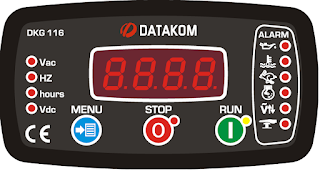 In any case this Kohler gas generator was in really good shape externally but had gotten saltwater into one of the cylinders somehow and thus needed a rebuild. There is really very little corrosion on it and so it was a good candidate for a rebuild. It got new pistons, a slight overbore job, new bearing, etc. The Kohler 5E is a 5 kW rated generator but I happen to know a dirty little secret that Kohler likely does not want told: The 5E marine generator is the exact same machine as the Kohler 7.3 marine generator. The only difference is the breaker on the unit.
In any case this Kohler gas generator was in really good shape externally but had gotten saltwater into one of the cylinders somehow and thus needed a rebuild. There is really very little corrosion on it and so it was a good candidate for a rebuild. It got new pistons, a slight overbore job, new bearing, etc. The Kohler 5E is a 5 kW rated generator but I happen to know a dirty little secret that Kohler likely does not want told: The 5E marine generator is the exact same machine as the Kohler 7.3 marine generator. The only difference is the breaker on the unit.This is not a conspiracy theory but in fact something often done in industry. Corporations want to have a product lineup in order to capture a broader range of sales. But it is expensive to redesign an entire generator for a small difference in power output. So Kohler designed this generator to be a 7.3 kW unit and then created a "marketing version" in the 5E. I know this for a fact because everything is the same between the two except the breaker. They both use the Kawasaki FD-501D 4 stroke gas motor. They both use the same exact part number generator head (I looked it up in the parts manual for both models). The only difference is the breaker; the 5E limits the current so that 5kW is not exceeded. Obviously, Third Wave will upgrade the breaker so that we get the full 7.3kW capability.
In order to install the generator we created a plywood landing pad for the unit as shown below. First we coated it with poly resin on all sides and then gel coated the top.

We then installed the landing pad in the bilge forward of the starboard engine. Some of these old boats that did not have a transom door (AKA "fish door") came equipped with what I can only describe as an aluminum spar whose purpose was to allow connection of a rope that could be used to haul big fish up over the gunwales. We used a chain winch with that spar to get the generator onboard and then three of us manhandled the unit into position in the saloon where it was ready to drop down into the bilge. The spar was then placed horizontally through both of the side windows in the saloon and the chain winch was again used to lower the generator into its final resting place in the bilge.

Click this link to see more details about the generation installation.



